Archive for the ‘Uncategorized’ Category
Grass fed Lamb Kebobs

I had a pound of lamb kabob meat and wanted to make kabobs, this is a version of a wonderful Jamie Oliver recipe and was delicious!
Lamb kebabs
Makes 6–8 kebabs
• 1lb grassfed lamb trimmed and cut into 1 inch cubes
• 6–8 skewers, either wood or metal. (wood should be soaked so it doesn’t burn)
• 2 organic red onions, peeled and quartered
• 2 organic red peppers, deseeded and cut into 1 inch pieces
• 2 small, organic zucchinis, cut into 1 inch pieces
for the marinade
• 1 tablespoon smoked paprika
• 2 cloves organic garlic
• ½ teaspoon cumin seeds
• 2 teaspoons coriander seeds
• Celtic or sea salt and freshly ground black pepper
• olive oil
First bash up all the spices in a pestle and mortar until fine, then mix with the oil to make a thick marinade paste. Put the lamb pieces into a bowl and cover with the marinade.
Let them sit there for half an hour to an hour.
Then, using the skewers, spike each piece of meat alternately with red onion, zucchini and peppers.
Grill for around 5 minutes, turning regularly, to give you nicely charred meat on the outside with juicy pink on the inside.
Allow to rest for a few minutes before eating. Enjoy!
Read more great Monday Mania posts here: http://www.thehealthyhomeeconomist.com/monday-mania-262012/
Read more great Fat Tuesday posts here: http://realfoodforager.com/fat-tuesday-february-7-2012/
GMOs in the News
 Some interesting articles this week, from major news sources. Good to see! Mom
Some interesting articles this week, from major news sources. Good to see! Mom
Grist investigation finds GMO-free bourbon is a rare spirit
By DEAN KUIPERS
Los Angeles Times
With the explosion of artisanal spirits in California and all over the U.S., as well documented by my colleagues here at the L.A. Times, one would think we’d be drowning in organic bourbon, GMO-free this and heritage that. But … no. Getting a snort of organic corn liquor is actually impossible, and drinking without supporting genetically modified maize (to be organic, it has to be GMO-free) proves to be a very, very limited affair.
An investigation by Grist, written by the delightfully named food editor Twilight Greenaway, finds that only the brands Wild Turkey and Four Roses are actually GMO-free. Well, at least there are two. Neither brand is certified organic, but you can be happy you’re not drinking organic corn off the face of the Earth.
About 85 percent of the corn grown in the U.S. is now genetically modified, and this has forced some distillers to cave. Jack Daniels (note: not a bourbon) had committed to using non-GMO corn until lately, when it became too hard to source their corn. Four Roses escapes this quandary because its former owner, Seagrams, grew its own grains and those sources are still available.
Wild Turkey? It’s GMO-free because it’s so cool. No, wait. Actually it’s because its distillers are prudent. Grist explains that they don’t want to put the bourbon on oak for 15 years and then find out there’s a problem with the GMO corn and have to dump it. Smart. These are people who are assuming what very few other food giants do: We don’t know what GMOs do to the body yet. They create their own insecticides and make plants impervious to massive doses of herbicides. Who knows what else that genetic structure does over time? The distillers figure it’s a risky business decision to use them.
And you know how you pour whiskey on stuff and it’s supposed to just kill everything, sterilizing it? Well, if your whiskey maker is saying he’s concerned about GMOs, what are we supposed to think about the other, decidedly less-robust stuff we eat all day?
Nah, it’s probably fine.
Read more here: http://www.miamiherald.com/2012/01/23/2603382/grist-investigation-finds-gmo.html#storylink=cpy
Effort gets underway to require GMO food labeling
By Jamie Hansen
ARGUS-COURIER STAFF
Published: Friday, January 20, 2012 at 2:15 p.m.
Last Modified: Friday, January 20, 2012 at 2:15 p.m.
The Petaluma Seed Bank bustled on Monday night as more than 20 people munched on organic ice cream and cookies and talked about what they saw as the dangers of genetically modified food. The reason for the meeting: A 2012 ballot initiative that would require labeling of genetically modified organisms, or GMOs, when they are sold in grocery stores.
Concern over GMOs — food whose DNA has been altered by humans — has increased in recent years. Many say that the dangers of such food haven’t been adequately tested, while consumers continue to unknowingly buy products containing GMOs.
In 2005, GMOs became a heated issue on the county ballot, when opponents proposed a measure that would have imposed a 10-year ban on growing or selling genetically-altered crops within the county.
Farm, ranch and grape grower organizations fought back, arguing that the ban would unfairly impact local agriculture, and the measure failed.
Now, a statewide group has sprung up to tackle the issue once again, but with a different strategy. The California Committee for the Right to Know is hoping to gather the 800,000 signatures necessary to place an initiative on the state ballot.
It’s called The California Right to Know Genetically Engineered Food Act. Rather than banning GMOs, it would require food sold in grocery stores to be labeled if it contained genetically altered products. It would also prohibit such food from being advertised as “natural.”
“We feel people have the right to know what they’re feeding their families,” said Karen Hudson, who is co-coordinating signature gathering for Sonoma County.
The Sonoma County Farm Bureau, which opposed the 2005 measure, couldn’t be reached for comment on the new initiative Wednesday.
Read the rest here: http://www.petaluma360.com/article/20120120/COMMUNITY/120129960/1362/community?Title=Effort-gets-underway-to-require-GMO-food-labeling
Monsanto Attempts to Lockout Socially Responsible Shareholder at Annual Meeting
ST. LOUIS, Jan. 20, 2012 /PRNewswire via COMTEX/ — Shareholder’s Resolution Would Require Chemical Giant to Study Risks of its Genetically Engineered Crops
Protests Outside Monsanto 2012 Annual Meeting Planned
On Tuesday, January 24 at 1:30 PM, Monsanto officers and shareholders will vote on a shareholder proposal to create a study of “material financial risks or operational impacts” associated with its chemical products and genetically modified organisms (GMOs).
The proposal represents one of the strongest signals to date that the biotech food conglomerate is facing growing consumer, legal, and regulatory uncertainties. As of today, however Monsanto has told John Harrington that they will not recognize his proxy who would speak on behalf of the resolution for only three minutes under normal circumstances.
The meeting itself is only open to shareholders but concerned citizens will be demonstrating outside the northeast entrance to Monsanto’s Lindberg campus beginning at 12:00 noon. Monsanto Headquarters is located at 800 North Lindberg Boulevard in St. Louis, MO.
Adam Eidinger, an organic food activist who recently led a walk from NY to Washington DC on behalf of honest food labeling, will present the shareholder resolution on behalf of Napa, California based Harrington Investments (HII) with help from the Pesticide Action Network of North America (PANNA).
Eidinger will be available for interview before and after the shareholder meeting, which he will drive a “Label GMO” art car to attend. Representatives from HII and PANNA will be also available for interview before and after the shareholder meeting. Eidinger’s written testimony is available by request.
In its statement recommending shareholders to vote against the HII resolution, Monsanto management stated that, “Farmers should have the freedom to choose which production method is best suited for their needs, whether organic, non-GM conventional or biotechnology traits. All of these systems can and do work effectively side by side…”
John Harrington, CEO of Harrington Investments questions the veracity of Monsanto’s statement: “While I am heartened by Monsanto’s sudden concern for the freedom of farmers, the unfortunate reality facing American farmers right now, is that genetic drift from GMO crops is contaminating their conventional and organic crops. This can be disastrous because many GMO crops cannot be sold to important markets, such as Europe, China and Japan. The potential legal implications for Monsanto are staggering.”
Eidinger, who organized last October’s a 100 person, 313 mile “Right2Know March” from New York City to the White House for federally mandated GMO food labeling says: “With the rise or Round-Up resistant ‘superweeds’ the company is simply telling farmers to spray even more toxic herbicides including 2,4 D, the main ingredient in Agent Orange. Many people are struggling to avoid GMOs and chemicals used on them in the food they eat due to serious health and environmental concerns yet Americans have no right to know what we are eating largely due to the close ties Monsanto has to President Obama’s USDA and FDA which has ignored more than 500,000 Americans who have signed on to the JustLabelIt.org petition to the FDA.”
More information about the protest may be found at http://www.facebook.com/events/340545799304131/
Read more great Monday Mania posts here: http://www.thehealthyhomeeconomist.com/monday-mania-1232012/
Read more great Fat Tuesday posts here: http://realfoodforager.com/fat-tuesday-january-24-2012/
Read more great Real Food Wednesday posts here: http://kellythekitchenkop.com/2012/01/real-food-wednesday-1182012.html
Read more great Simple Lives Thursday posts here: http://gnowfglins.com/2012/01/26/simple-lives-thursday-80/
Honeybee deaths linked to seed insecticide exposure
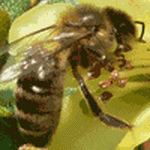
Here’s just one more reason that it seems like GMOs are a problem. All the pesticides being used seem to be causing problems for all of us. Mom
Honeybee populations have been in serious decline for years, and Purdue University scientists may have identified one of the factors that cause bee deaths around agricultural fields.
Analyses of bees found dead in and around hives from several apiaries over two years in Indiana showed the presence of neonicotinoid insecticides, which are commonly used to coat corn and soybean seeds before planting. The research showed that those insecticides were present at high concentrations in waste talc that is exhausted from farm machinery during planting.
The insecticides clothianidin and thiamethoxam were also consistently found at low levels in soil – up to two years after treated seed was planted – on nearby dandelion flowers and in corn pollen gathered by the bees, according to the findings released in the journal PLoS One this month.
“We know that these insecticides are highly toxic to bees; we found them in each sample of dead and dying bees,” said Christian Krupke, associate professor of entomology and a co-author of the findings.
The United States is losing about one-third of its honeybee hives each year, according to Greg Hunt, a Purdue professor of behavioral genetics, honeybee specialist and co-author of the findings. Hunt said no one factor is to blame, though scientists believe that others such as mites and insecticides are all working against the bees, which are important for pollinating food crops and wild plants.
“It’s like death by a thousand cuts for these bees,” Hunt said.
Krupke and Hunt received reports that bee deaths in 2010 and 2011 were occurring at planting time in hives near agricultural fields. Toxicological screenings performed by Brian Eitzer, a co-author of the study from the Connecticut Agricultural Experiment Station, for an array of pesticides showed that the neonicotinoids used to treat corn and soybean seed were present in each sample of affected bees. Krupke said other bees at those hives exhibited tremors, uncoordinated movement and convulsions, all signs of insecticide poisoning.
Seeds of most annual crops are coated in neonicotinoid insecticides for protection after planting. All corn seed and about half of all soybean seed is treated. The coatings are sticky, and in order to keep seeds flowing freely in the vacuum systems used in planters, they are mixed with talc. Excess talc used in the process is released during planting and routine planter cleaning procedures.
“Given the rates of corn planting and talc usage, we are blowing large amounts of contaminated talc into the environment. The dust is quite light and appears to be quite mobile,” Krupke said.
Krupke said the corn pollen that bees were bringing back to hives later in the year tested positive for neonicotinoids at levels roughly below 100 parts per billion.
“That’s enough to kill bees if sufficient amounts are consumed, but it is not acutely toxic,” he said.
On the other hand, the exhausted talc showed extremely high levels of the insecticides – up to about 700,000 times the lethal contact dose for a bee.
“Whatever was on the seed was being exhausted into the environment,” Krupke said. “This material is so concentrated that even small amounts landing on flowering plants around a field can kill foragers or be transported to the hive in contaminated pollen. This might be why we found these insecticides in pollen that the bees had collected and brought back to their hives.”
Krupke suggested that efforts could be made to limit or eliminate talc emissions during planting.
“That’s the first target for corrective action,” he said. “It stands out as being an enormous source of potential environmental contamination, not just for honeybees, but for any insects living in or near these fields. The fact that these compounds can persist for months or years means that plants growing in these soils can take up these compounds in leaf tissue or pollen.”
Although corn and soybean production does not require insect pollinators, that is not the case for most plants that provide food. Krupke said protecting bees benefits agriculture since most fruit, nut and vegetable crop plants depend upon honeybees for pollination. The U.S. Department of Agriculture estimates the value of honeybees to commercial agriculture at $15 billion to $20 billion annually.
Hunt said he would continue to study the sublethal effects of neonicotinoids. He said for bees that do not die from the insecticide there could be other effects, such as loss of homing ability or less resistance to disease or mites.
“I think we need to stop and try to understand the risks associated with these insecticides,” Hunt said.
ABSTRACT
Christian H. Krupke, Greg J. Hunt, Brian D. Eitzer, Gladys Andino, Krispn Given
Populations of honeybees and other pollinators have declined worldwide in recent years. A variety of stressors have been implicated as potential causes, including agricultural pesticides. Neonicotinoid insecticides, which are widely used and highly toxic to honeybees, have been found in previous analyses of honeybee pollen and comb material. However, the routes of exposure have remained largely undefined. We used LC/MS-MS to analyze samples of honeybees, pollen stored in the hive and several potential exposure routes associated with plantings of neonicotinoid treated maize. Our results demonstrate that bees are exposed to these compounds and several other agricultural pesticides in several ways throughout the foraging period. During spring, extremely high levels of clothianidin and thiamethoxam were found in planter exhaust material produced during the planting of treated maize seed. We also found neonicotinoids in the soil of each field we sampled, including unplanted fields. Plants visited by foraging bees (dandelions) growing near these fields were found to contain neonicotinoids as well. This indicates deposition of neonicotinoids on the flowers, uptake by the root system, or both. Dead bees collected near hive entrances during the spring sampling period were found to contain clothianidin as well, although whether exposure was oral (consuming pollen) or by contact (soil/planter dust) is unclear. We also detected the insecticide clothianidin in pollen collected by bees and stored in the hive. When maize plants in our field reached anthesis, maize pollen from treated seed was found to contain clothianidin and other pesticides; and honeybees in our study readily collected maize pollen. These findings clarify some of the mechanisms by which honeybees may be exposed to agricultural pesticides throughout the growing season. These results have implications for a wide range of large-scale annual cropping systems that utilize neonicotinoid seed treatments.
Provided by Purdue University
“Honeybee deaths linked to seed insecticide exposure.” January 12th, 2012. http://www.physorg.com/news/2012-01-honeybee-deaths-linked-seed-insecticide.html
Read more Monday Mania posts here: http://www.thehealthyhomeeconomist.com/monday-mania-1162012/
Read more Fat Tuesday posts here: http://realfoodforager.com/fat-tuesday-january-17-2012/
The Big GMO Cover-up
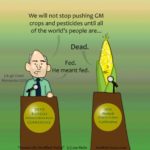
This is a great article by Jeffrey Smith from Urban Garden Magazine a few years ago. It’s even more relevant now with all the new approvals of GMO seeds. I have the beginning of the article below, follow the link at the bottom to read the rest. Mom
Something doesn’t quite add up about genetically modified (GM) foods.
Big biotech claims that genetic engineering is a necessary step towards feeding the world’s growing population. And yet debate still rages as to whether GM crops actually increase yields at all. Furthermore, the UN recently stated that 30,000 people a day were starving to death, but not because of underproduction of crops. It’s simply through lack of access.
Independent scientific studies raised serious alarm bells over the safety of GM foods over a decade ago. But while this made front-page headlines in European newspapers, the North American mainstream media were conspiratorially silent.
Biotech companies stand to make billions from their seed patents. Governments and supreme courts have sanctioned the patenting of life itself. The planet’s food supply is becoming increasingly dominated by fewer and fewer players.
If the biotech industry’s stated intention of feeding the world is misguided or even misdirecting, is there another political agenda behind GM food? Have we been mis-sold? Were we even given a choice in the first place?
Jeffrey M. Smith, international bestselling author of Seeds of Deception and Genetic Roulette: The Documented Health Risks of Genetically Engineered Foods, reveals the shocking truth behind GM foods and the huge effort by governments and Biotech corporations to keep it out of the mainstream media and outside of your awareness.
It looks the same—the bread, pies, sodas, even corn on the cob. So much of what we eat every day looks just like it did 20 years ago. But something profoundly different has happened without our knowledge or consent. And according to leading doctors, what we don’t know may already be hurting us big time.
In May, the American Academy of Environmental Medicine (AAEM) publicly condemned genetically modified organisms (GMOs) in our food supply, saying they posed “a serious health risk.” They called on the US government to implement an immediate moratorium on all genetically modified (GM) foods, and urged physicians to prescribe non-GMO diets for all patients.
GM-What?
Genetic engineering is quite distinct from selective breeding because it involves taking genes from a completely different species and inserting them into the DNA of a plant or animal. The long term effects of this for our health and our planet’s biodiversity are unknown.
AAEM, an “Academy of Firsts,” was the first US medical organization to describe or acknowledge Gulf War Syndrome, chemical sensitivity, food allergy/addiction, and a host of other medical issues. But the potential for harm from GMOs dwarfs anything they have identified thus far. It can impact everyone who eats.
More than 70% of the foods on supermarket shelves contain derivatives of the eight GM foods on the market—soy, corn, oil from canola and cottonseed, sugar from sugar beets, Hawaiian papaya, and a small amount of zucchini and crook neck squash. The biotech industry hopes to genetically engineer virtually all remaining vegetables, fruits, grains, and beans (not to mention animals).
The two primary reasons why plants are engineered are to allow them to either drink poison, or produce poison. The poison drinkers are called herbicide tolerant. They’re inserted with bacterial genes that allow them to survive otherwise deadly doses of toxic herbicide. Biotech companies sell the seed and herbicide as a package deal, and US farmers use hundreds of millions of pounds more herbicide because of these types of GM crops. The poison producers are called Bt crops. Inserted genes from the soil bacterium Bacillus Thuringiensis produce an insect-killing pesticide called Bt-toxin in every cell of the plant. Both classes of GM crops are linked to dangerous side effects.
Doctors and Patients: Just Say No to GMOs
“Now that soy is genetically engineered,” warns Ohio allergist Dr. John Boyles, “it is so dangerous that I tell people never to eat it.” How dangerous are GM foods? World renowned biologist Pushpa M. Bhargava, PhD, believes they are the major reason for the recent rise in serious illnesses in the US.
The range of what GMOs might do to us is breathtaking. “Several animal studies,” according to the AAEM, reveal a long list of disorders, including: “infertility, immune dysregulation, accelerated aging, dysregulation of genes associated with cholesterol synthesis, [faulty] insulin regulation, cell signaling, and protein formation, and changes in the liver, kidney, spleen and gastrointestinal system.”
“There is more than a casual association between GM foods and adverse health effects,” says the AAEM position paper. Based on established scientific criteria, “there is causation.”
Difficult to Trace the Damage
Outside the carefully controlled laboratory setting, it is more difficult to confidently assign GMOs as the cause for a particular set of diseases, especially since there are no human clinical trials and no agency that even attempts to monitor GMO-related health problems among the population. “If there are problems,” says biologist David Schubert, PhD, of the Salk Institute, “we will probably never know because the cause will not be traceable and many diseases take a very long time to develop.”
GM crops were widely introduced in 1996. Within nine years, the incidence of people in the US with three or more chronic diseases nearly doubled—from 7% to 13%. Visits to the emergency room due to allergies doubled from 1997 to 2002. And overall food related illnesses doubled from 1994 to 2001, according to the Centers for Disease Control. Obesity, diabetes, gastrointestinal disorders, and autism are also among the conditions that are skyrocketing in the US.
The Lyme Induced Autism Foundation, a patient advocacy group, is not waiting for studies to prove that GMOs cause or worsen Lyme, autism, and the many other diseases on the rise since gene-spliced foods were introduced. Like AAEM, the LIA Foundation says there is more than enough evidence of harm in animal feeding studies for them to “urge doctors to prescribe non-GMO diets” and for “individuals, especially those with autism, Lyme disease, and associated conditions, to avoid” GM foods.
Another patient group, those suffering from eosinophilia myalgia syndrome (EMS), is more confident about the GMO origins of their particular disease. It was caused by a genetically engineered brand of a food supplement called L-tryptophan in the late 1980s. It killed about 100 Americans and caused 5,000-10,000 people to fall sick or become permanently disabled. The characteristics of EMS made it much easier for authorities to identify the epidemic and its cause. It only affected those who consumed the pills; symptoms came on almost immediately; and its effects were horrific—including unbearable pain and paralysis. There was even a unique, easy-to-measure change in the white blood cell count. But even though EMS was practically screaming to be discovered, it still took the medical community more than four years—and it was almost missed.
“The experiments simply haven’t been done and we now have become the guinea pigs.” David Suzuki, renowned Canadian geneticist.
What if the GMOs throughout our food supply are creating common diseases which come on slowly? It would be nearly impossible to confirm them as the cause. “Physicians are probably seeing the effects in their patients,” says AAEM president Dr. Jennifer Armstrong, “but need to know how to ask the right questions.” The patients at greatest risk are the very young. “Children are the most likely to be adversely effected by toxins and other dietary problems” related to GM foods, says Dr. Schubert. They become “the experimental animals,” our collective canaries in the coal mine.
Warnings by Government Scientists Ignored and Denied
Scientists at the Food and Drug Administration (FDA) had warned about all these problems back in the early 1990s. According to secret documents made public from a lawsuit, the scientific consensus at the agency was that GM foods were inherently dangerous, and might create hard-to-detect allergies, poisons, new “super” diseases, and nutritional problems. They urged their superiors to require rigorous long-term tests. But the White House had ordered the agency to promote biotechnology and the FDA responded by recruiting Michael Taylor, Monsanto’s former attorney, to head up the formation of GMO policy. That policy, which is in effect today, denies knowledge of the scientists’ concerns and declares that no safety studies on GMOs are required. It is up to Monsanto and the other biotech companies—who have a long history of lying about the toxicity of their earlier products—to determine if their own foods are safe.
After overseeing GMO policy at the FDA, Mr. Taylor worked on GMO issues at the USDA, and then later became Monsanto’s vice president. In the summer of 2009, he went through the revolving door again. Taylor was appointed by the Obama administration as the de facto US food safety czar at the FDA.
Dangerously Few Studies, Untraceable Diseases
“Where is the scientific evidence showing that GM plants/food are toxicologically safe, as assumed by the biotechnology companies?” This was the concluding question posed in a 2007 review of published scientific literature on the health risks of GM plants, showing that the number of studies and available data are “very scarce.”
“The experiments simply haven’t been done and we now have become the guinea pigs,” says renowned Canadian geneticist David Suzuki. He adds, “Anyone that says, ‘Oh, we know that this is perfectly safe,’ I say is either unbelievably stupid or deliberately lying.”
When consumers realize the dangers of GM foods and that the FDA has abdicated its responsibility to protect us, they usually want to opt out of this massive feeding experiment. In fact, most Americans already say they would avoid GMO brands if given a choice.
It wouldn’t take a majority of us to kick GMOs out of our food supply. Kraft and other food companies wouldn’t wait until half their market share is gone before telling their suppliers to switch to the non-GM corn, soy, etc. By using GM ingredients, they don’t offer customers a single advantage. The food doesn’t taste better, last longer, or have more nutrients. Thus, if even a tiny percentage of US consumers—say 5% or 15 million people—started avoiding GMO brands, the millions in lost sales revenue would likely force brands to remove all GM ingredients, like they already have in Europe.
But the FDA doesn’t want to give us the choice. They ignore the wishes of nine out of ten Americans for mandatory GMO labeling in order to promote the economic interests of just five biotech companies.
The Shocking Evidence of Harm from GMOs
Genetically modified (GM) foods have not been scientifically tested on human beings. (The only published human feeding study had ominous results – see later.) Instead, animals are used as our surrogates, but the few published animal safety studies are generally short-term and superficial. In fact, industry-funded research is widely criticized as designed to avoid finding problems. They’ve got bad science—down to a science. Even still, the accumulated evidence of harm is compelling people to read ingredient labels and avoid brands with genetically modified organisms (GMOs).
Infant Mortality and Reproductive Disorders
Read the rest of the article here: http://www.seedsofdeception.com/utility/showArticle/?objectID=4302
Read more, great Monday Mania posts here: http://www.thehealthyhomeeconomist.com/monday-mania-192012/
Read more, great Fat Tuesday posts here: http://realfoodforager.com/fat-tuesday-january-10-2012/
Read more, great Real Food Wednesday posts here: http://kellythekitchenkop.com/2012/01/real-food-wednesday-142012.html
Homemade Applesauce
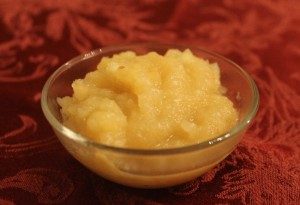
We’ve gotten a lot of wonderful apples in our CSA (Community Supported Agriculture) box the past month or so and no one was eating them. I’ve never made applesauce before and was surprised at how easy it was – and how delicious!
INGREDIENTS
3 to 4 lbs of peeled, cored, and quartered organic apples. (Cooking apples are best – we had a great selection of Granny Smith, Fuji, and Macintosh)
4 strips of organic lemon peel – use a vegetable peeler to strip 4 lengths
Juice of one organic lemon, about 3-4 Tbsp
3 inches of cinnamon stick
¼ cup Rapadura, Organic Cane Sugar or Stevia = to ¼ cup
1 cup of water
½ teaspoon of Celtic or sea salt
Directions
1 Put all ingredients into a large enamel or stainless steel pot. Cover. Bring to boil. Lower heat and simmer for 20-30 minutes.
2 Remove from heat. Remove cinnamon sticks and lemon peels. Mash with potato masher.
That’s it! You can serve it either hot or cold. Enjoy!
Read more, great Monday Mania posts here: http://www.thehealthyhomeeconomist.com/monday-mania-122012/
Read more, great Fat Tuesday posts here: http://realfoodforager.com/fat-tuesday-january-3-2012/
Read more, great Real Food Wednesday posts here: http://kellythekitchenkop.com/2012/01/real-food-wednesday-12282011-2.html
Read more, great Simple Lives Thursday posts here: http://gnowfglins.com/2012/01/05/simple-lives-thursday-77/
Chocolate PB Bark

I had a craving for PB cups but wanted a simpler version. This has the wonderful flavor without taking the time to layer the ingredients. It was delicious! I am wishing you a very Happy and healthy New Year. Mom
1 cup organic coconut oil
1 cup organic cocoa powder
Stevia equal to ¾ cup sugar or 3/4 cup swerve
1/4 cup peanut butter
1/2 tsp vanilla extract
Dash of Celtic sea salt
Gently melt oil. Mix with the rest of ingredients until well combined. You can use a whisk or a stand mixer.
You can add various mix in’s, if you’d like. Nuts, shredded coconut raisins.
Either pour into chocolate molds, or cover bottom of square baking pan with plastic wrap and pour bark in. Freeze until firm. Cut or break into squares.
Enjoy!
Read more, great Monday Mania posts here: http://www.thehealthyhomeeconomist.com/monday-mania-12262011/
Read more, great Fat Tuesday posts here: http://realfoodforager.com/2011/12/fat-tuesday-december-27-2011/
Read more, great Real Food Wednesday posts here: http://kellythekitchenkop.com/2011/12/real-food-wednesday-12282011.html
Read more, great Simple Lives Thursday posts here: http://gnowfglins.com/2011/12/28/simple-lives-thursday-76/
OWS Farmers March
OWS – Farmers March – Jim Gerritsen
Support our Farmer’s and support our Food! xoxo Mom
Read more, great Monday Mania posts here: http://www.thehealthyhomeeconomist.com/monday-mania-12192011/
Read more, great Fat Tuesday posts here: http://realfoodforager.com/2011/12/fat-tuesday-december-20-2011/
Read more, great Real Food Wednesday posts here: http://kellythekitchenkop.com/2011/12/real-food-wednesday-12212011.html
Read more, great Simple Lives Thursday posts here: http://gnowfglins.com/2011/12/21/simple-lives-thursday-75/
Read more, great Fight Back Friday posts here: http://www.foodrenegade.com/fight-back-friday-december-23rd/
Lamb Sausage Patties
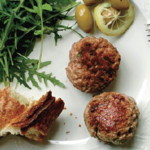
Lamb Sausage Patties
I had a pound of ground lamb that I wanted to try something different with. I found a recipe I changed around to make this. They were easy to make and delicious.
Yield: Makes 6 sausages
Ingredients:
1 pound ground lamb, preferably grassfed and pasture raised
2 large organic garlic cloves, pressed
1 1/2 teaspoons coarse Celtic or kosher salt
1/3 cup crumbled organic feta cheese
1 tablespoon finely chopped fresh organic mint
1 tablespoon organic extra-virgin olive oil
Directions:
Place lamb in large bowl. Sprinkle garlic and salt over.
Gently toss lamb with garlic, salt, feta and mint to blend.
Divide lamb into 6 equal patties.
Heat olive oil in heavy large skillet over medium heat.
Cook lamb sausages until browned on both sides and cooked to desired doneness, about 6 minutes per side for medium. Serve hot and enjoy!
Read more, great Monday Mania posts here: http://www.thehealthyhomeeconomist.com/monday-mania-12122011/
Read more, great Fat Tuesday posts here: http://realfoodforager.com/2011/12/fat-tuesday-december-13-2011/
Read more, great Real Food Wednesday posts here: http://kellythekitchenkop.com/2011/12/real-food-wednesday-12142011.html
Read more, great Simple Lives Thursday posts here: http://gnowfglins.com/2011/12/15/simple-lives-thursday-74/
Read more, great Fight Back Friday posts here: http://www.foodrenegade.com/fight-back-friday-december-16th/
Wonderful Pumpkin Cheesecake

Wonderful Pumpkin Cheesecake – Gluten Free and Sugar Free
I made this for Thanksgiving and it was wonderful. My husband keeps asking when I’ll make it again. (I’m waiting for the holidays). It seemed a little complicated, as they’re three steps but the crust and topping are really easy to make – as is the filling. Make it the day ahead if you can and enjoy! It’s Gluten free and sugar free as well, but you could substitute Rapadura for the Stevia if you’d like. It was even prettier before we cut it. Great for a special dinner.
Ingredients:
Crust:
1 ½ Tablespoons organic, pastured butter, softened
¼ ground almonds (you could also use hazelnuts or pecans)
Filling:
1 15-ounce can organic Pumpkin (just pumpkin not pie filling)
8 ounces organic Cream Cheese
Stevia equal to just over ½ cup of sugar (my brand is one tablespoon)
1 tsp. Cinnamon
½ tsp. Pumpkin Pie spice
1 tsp. Organic Vanilla (my recipe is here:
1 tsp. zest from an organic Orange
3, extra large, pastured organic eggs
Topping – mix together well:
1 cup organic Sour Cream
Stevia equal to 2 teaspoons sugar
½ tsp. organic vanilla
Directions:
Preheat oven to 350° F
Coat a 9” springform pam with the softened butter. Pour the ground almonds into the pan and shake it to distribute the crumbs over the sides and bottom. This is the ‘crust’.
In a mixer, with the paddle attachment, mix together the cream cheese and stevia. Add in the pumpkin and spices, then add the vanilla and orange zest. Add in the eggs, one at a time, mixing only enough to incorporate. Pour into the springform pan and bake for 55 minutes.
Once it’s out of the oven, top immediately with the sour cream mixture.
Let cool and refrigerate for a least 4 hours – it’s better if you can make it the day before you serve it and refrigerate overnight. Enjoy!
Read more, great Monday Mania posts here: http://www.thehealthyhomeeconomist.com/monday-mania-1252011/
Read more, great Fat Tuesday posts here: http://realfoodforager.com/2011/12/fat-tuesday-december-6-2011/
Read more, great Real Food Wednesday posts here: http://kellythekitchenkop.com/2011/12/real-food-wednesday-12072011.html
Read more, great Simple Lives Thursday posts here: http://gnowfglins.com/2011/12/07/simple-lives-thursday-73/
Read more, great Fight Back Friday posts here: http://www.foodrenegade.com/fight-back-friday-december-9th/
GMOs in the News
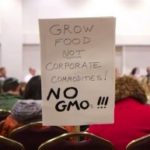
GMOs in the News – November 2011
Hope everyone had a Happy Thanksgiving – Mom
The good new is that the California Ballot initiative has been filed and we should be ready to start gathering signatures In early January. If you are in California, please join us – even a few hours a month – to help gather signatures from January thorough April. If you are not in California and want GMOs labeled – please donate! Even $5 will make a difference. And getting GMOs labeled in CA will get them labeled for everyone in the US. Companies are not going to have separate labels for one state.
Here’s the donation link: http://www.labelgmos.org/?recruiter_id=958
How much insecticide do Bt plants actually produce?
New publication shows inadequacies in risk assessment
TestBiotech (Munich), 21 November 2011
http://www.testbiotech.de/en/node/578
A new publication by an international research consortium has revealed several inadequacies in current approaches to risk assessment of genetically engineered plants. The publication deals with methods used for measurement in so-called Bt-plants. These plants produce an insecticidal protein (a so-called Bt toxin) that originates from soil bacteria (Bacillus thuringiensis). One example is maize MON810 which is cultivated in some countries in the EU, many others can be imported and used in food and feed. Now for the first time, joint research involving four laboratories has shown that the results produced by industry and other institutions so far are not reliably reproducible and comparable because they are not determined and validated by standardized methods.
The actual content of these Bt toxins is highly relevant for assessing risks for the environment, and also for preventing resistance in pest insects. Without reliable data, the safety of these genetically engineered plants cannot be properly assessed.
András Székács from the Plant Protection Institute of the Hungarian Academy of Sciences summarized relevant findings: “Our data emphasize the importance of standardized protocols among laboratories and provide compelling evidence that, currently, reproducibility and comparability of reported Bt toxin measurements is low. Hence, individual results of Bt toxin concentrations cannot be taken at face value as a definitive result without further validation. An outstanding example is the reporting of Bt concentrations in pollen of MON 810 maize, stemming from very few individual studies only.”
The content of Bt toxin in pollen is a pivotal question when it comes to environmental risk assessment and regulatory decision-making. The pollen can be taken up by various pollinating insects such as honey bees and wild bees, hoverflies and many more. It can also be ingested by butterfly caterpillars that feed on pollen-dusted plants. Toxic pollen is extremely rare in nature but has become wide-spread where genetically engineered Bt-plants are grown. Of similar importance is the Bt content in roots since it might affect important soil organisms and their food web. But also the Bt content in those parts of the plants that are used for food and feed is critical since open questions remain concerning their potential effects on health. Additionally, only very little research has investigated the impact of various environmental factors on the Bt toxin production in different Bt plant varieties and plant parts. Thus, reliable methods for measuring Bt concentrations in Bt plants that can be compared among studies are indispensable and urgently needed.
Read the rest here: http://gmwatch.eu/index.php?option=com_content&view=article&id=13513:how-much-insecticide-do-bt-plants-produce
Boulder Citizens Say No to GMOs, Will the Commissioners Listen?
By Matt Spaeth on November 16, 2011
In Boulder, CO, the fight to keep GMOs off county lands is entering the final rounds. After months of deliberation, an agricultural policy group has recommended that GMOs be allowed on open space land and the people of Boulder county are making sure their leaders know they do not approve. Their message is being heard and the collective thorn is growing in Monsanto’s side. Will the county commissioners side with the corporations or the people?
The joint session of the Food and Agriculture Policy Council (FAPC) and the Parks and Open Space Advisory Commission (POSAC) saw a huge turnout Tuesday night at the Longmont Convention Center. The purpose of this meeting was to publicly present and receive comments on the current agricultural policy recommendations set forth by the members of the Cropland Policy Advisory Group (CPAG). The Boulder Cropland Policy encompasses many aspects of agriculture, but the main issue is whether to let farmers grow GMO crops on public open space land. While this group could not come to a consensus on the GMO issue, the majority of the members recommended that GMOs be allowed on open space land.
Boulder, known for its progressive stance on sustainability and the environment, naturally attracts more health-oriented people than the national average. Local surveys have shown that 71% of the people do not approve of GMOs being grown on county land. Proponents for both sides of the issue were in attendance, but the crowd’s reaction to the meeting’s proceedings made it overwhelmingly clear who was the majority. Concerned citizens arrived carrying posters and the applauses for non-GMO statements were so long and numerous, the facilitator requested they be withheld.
Each citizen was given three minutes to speak. The vast majority expressed their concerns about the safety of GMO crops, their associated chemical application, and possible contamination issues. They spoke out against the conflict of interest, political influence and corporate greed that has affected national GMO public policy.
Members of the Boulder GMKnow Group, a local non-GMO awareness group organized by Scott and Mary Smith, were not satisfied with the recommended agricultural policy and wrote their own. This new policy, called the Citizens Cropland Policy was read by 25 members in 3-minute intervals and is available for viewing and endorsement on their website.
The opposite camp showed up as well. Standing out like sore thumbs, the large men, wearing blazers and cowboy hats, stood mostly in the back of the room. Their arguments were that GMOs made it easier for them to make more money.
During the public comments, an unidentified man in red shirt, who expounded on the benefits of GMOs to the panel, was later questioned as to his affiliations by an elderly man in the crowd. The red-shirted man pushed the elderly man and told him to “sit down”. It was later revealed to the panel that the red-shirted man is a Monsanto employee.
Read the rest here: http://foodintegritynow.org/2011/11/16/boulder-citizens-say-no-to-gmos-will-the-commissioners-listen/
Read more, great Monday Mania Posts here: http://www.thehealthyhomeeconomist.com/2011/11/monday-mania-11282011/
Read more, great Real Food Wednesday posts here: http://kellythekitchenkop.com/2011/11/real-food-wednesday-11302011.html
Read more, great Simple Lives Thursday posts here: http://gnowfglins.com/2011/11/30/simple-lives-thursday-72/